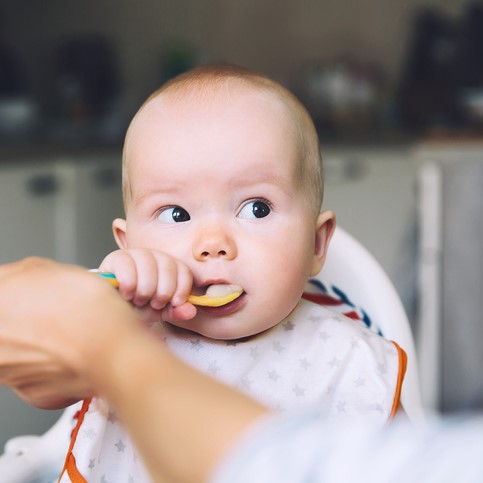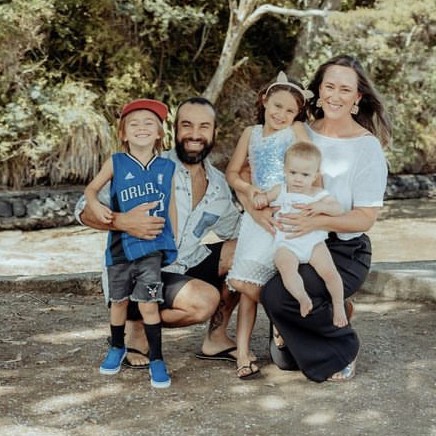Interview with Danella Kaafar: What you need to know about bottle feeding your breastfed pēpi

Māmā of two, Danella Kaafar is passionate about supporting māmā who are wanting to express breast milk and introduce a bottle to their chest/breastfed pēpi. Ahead of her much-anticipated seminar at the Wellington Baby Expo, we caught up with Danella to discuss bottle feeding your pēpi when you’re chest / breastfeeding, tips on what to do if your pēpi refuses the bottle, what bottles are best and what to look for in a breast pump.
Kia ora Danella, can you start by introducing yourself, and telling us a bit about what you do for mahi?
My brother and I run Rumina Natural Care where we distribute NUK and other brands into New Zealand stores. In my role I’m often supporting people who are caring for babies with introducing a bottle. I spend a lot of time helping people to become more efficient with expressing breast milk and a time supporting parents who are feeding from their bodies. I have two of my own children who were breastfed until 2 and a half and bottle-fed expressed milk as I went back to work when they were just 12 weeks with my first and 9 weeks with my second.
What are the benefits of introducing a bottle when you are planning to chest / breastfeed?
Introducing a bottle to a baby that is fed from your body can be for a variety of reasons. Many lactating parents will want to return to paid work outside of the home, some will want support feeding baby, others might just need time out to run errands or get their hair done! Whatever the reason, the most important thing to know is that baby can have bottles and that won’t affect you feeding from your body.
What’s the best age to introduce a bottle? If whanau are yet to introduce a bottle to their pēpi, can it be too late?
Babies that are still learning to breastfeed are easier to introduce a bottle to. It’s important to establish breastfeeding first so you feel confident feeding baby from your body, the exception is of course if baby needs to be bottle fed early on for whatever reason, of course go ahead and bottle feed. Once you feel pretty good with feeding baby from your body that’s a good time to introduce expressing and bottle feeding. So, when baby is around 2-3 months.
Teat selection is important as babies that are breastfed use their muscles in a specific way and getting the teat wrong can interfere with the way they feed from your body.
If you have an older baby, it’s not too late! You can skip introducing a teat all together if you prefer and go straight to a soft Sippy cup with milk. Of if you’re struggling to get baby to accept a teat and it’s important to you that they accept a bottle then I would recommend getting an orthodontic shaped latex teat and soak it in your breast milk. It will take on your milk smell and its soft texture feels more like skin in baby’s mouth. Babies that are well established feeding from our bodies are used to a flatter orthodontic shape in their mouth, our nipples don’t stay round in their mouth when we feed from them.
What advice would you give whanau whose pēpi is refusing to take a bottle?
Get the teat right. It’s hard for baby to learn to use their mouth differently after breastfeeding is well established. A NUK latex teat soaked in breastmilk is a great option. Relax, make sure baby is not upset or overwhelmed, talk to them, tell them what’s happening, explain to them what’s going to happen, even if baby isn’t talking yet they understand a lot. Hold them confidently and calmly, allow baby to start and stop the feed. It can take up to ten tries for baby to get used to the bottle so go slowly and consistently.
How can partners help with bottle feeding?
If a partner wants to support the feeding parent to get a little more sleep, rather than taking the night feeds, they could take a late evening feed. So māmā feeds baby, goes to bed early, the supporting person stays up a little later and feeds baby with the bottle, sometimes called a dream feed, around 10/11pm, then puts baby back to bed. Then māmā can wake up for the next feed in the wee hours of the morning. Those early morning feeds are really important for milk production!
There are so many bottles available, it can feel overwhelming to choose which one to buy! Are all bottles the same? Do you have any advice when it comes to choosing a bottle?
Not all bottles are the same. You want to look for the European safety standard, this ensures the measurements are accurate on the outside of the bottle and the materials used are safe for baby. Amazingly if the bottle doesn’t have this EN number it doesn’t have to meet any standard to be sold in NZ. Teat selection is really important when you want to combine bottle and breastfeeding. A slow flow teat is ideal for breast milk. Latex teats are absorbent so you can soak these in your milk to make them taste like you for baby. The NUK shape was designed to replicate the nipple during breastfeeding which is helpful when baby has been feeding from your body. **
** Ortodontia 3 (35) 2006: Study of the act of sucking in healthy babies in breastfeeding and artificial feeding
using NUK Teats.
What are your top 3 tips for māmā who want to express, but have never done it before?
- Relax! It’s so important to not focus on the milk but rather think of your baby, how they feel when they suckle from you, the weight of their body when you hold them, close your eyes and think of baby don’t think about the pumping.
- Give yourself at least two weeks of trying to express for about 15 minutes a day – it can take time for your body to learn to respond to the pump. A lot of people give up too soon.
- We have this incredible hormonal connection to our baby but not to our breast pump. It can be helpful while you are learning to express to feed baby on one side and hold your pump on the other.
What should you look for when purchasing a breast pump?
- It’s helpful to know what you will use your breast pump for. Someone going back to work early on or having multiples will likely need a good double electric pump. Someone who will be home with their pēpi for a year and would like to occasionally leave a bottle of expressed milk might be fine with a milk collector or manual pump.
- Having the option of variable speeds and suction levels makes it more likely that you will find a setting your body responds well to.
- If you are buying second hand you should check that the pump is a closed system, this means there is a barrier which prevents milk entering the motor. This will help protect baby from milk contamination from the previous user.
What advice do you have for māmā who can only express a small amount at a time, and are trying to increase their supply?
- Stay hydrated, you can add electrolytes to your water, some people find that can double their pumping output, especially if you’re exercising.
- Power pumping (a technique that is designed to mimic cluster feeding) can be a great routine to try to increase your output. It takes about an hour but you can put some tv on and set timers on your phone for the different phases and try to chill while you are doing it. Or the latest NUK breast pumps can save a routine so you can turn it on and it will run automatically.
- Be patient, especially if you have been exclusively feeding baby from your body for a while. Your body knows how much milk to make for your baby and if you are trying to express extra it can take a little time for your body to feedback that message, especially when baby is older. The more often you empty your breasts the faster your body works to replenish the supply. So pop your pump on after every feed even if it’s just 5 minutes and you get no milk. You are signalling to your body to make more milk.
Do you have any tips for māmā who want to add a bottle to their routine, but feel like expressing and bottle-feeding expressed milk is becoming too hard?
It can be a commitment, especially if your baby is unable to feed from your body or you are back to work early on. Getting the right equipment is helpful, it’s going to be really hard work expressing every feed with a manual pump so if you do need to express a lot get a double pump, get a steriliser so sterilising is easier. But alternatively, you don’t have to give your baby a bottle at all. Your support people and whanau can bond with baby by doing nappy changes, burping, baths. Feeding baby to bond isn’t a must, remember there will be lots and lots of solid food meals they can do in six short months. If you do need to leave baby and you haven’t got expressed milk, formula is very safe and acceptable to use as an alternative. You may find baby doesn’t like the taste and will wait for you to come home, which is also fine if it’s not too long. If you do miss a feed for whatever reason and baby is given an alternative milk source its ideal if you can express to maintain your supply. You could hand express into a sterilised container if you don’t have a breast pump.
You meet and hear more from Danella at The Baby Expo in Wellington this weekend.
Wellington
28 & 29 May
9am – 4pm
Lower Hutt Town Hall & Events Centre



